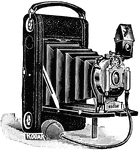Cameras and Photography
The Cameras and Photography ClipArt gallery offers 23 illustration of photographic equipment and processes.

Image by Aperature
"If light from a highly luminous body is admitted to a darkened room through a small hole in the shutter…
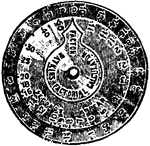
Watkins's Factorial Calculator
An aluminum set of disks that correctly finds the time needed to develop photos in solution
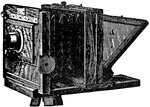
Camera
A device used to take pictures, either singly or in sequence, with or without sound recording, such…

Camera Lucida
"An optical instrument employed to facilitate the sketching of objects from nature by producing a reflected…
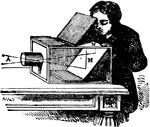
Camera Obscura
"An optical instrument employed for exhibiting the images of objects in their forms and colors, so that…

Camera Obscura
"Camera obscura strictly signifies a darkened chamber, because the room must be darkened, in order to…
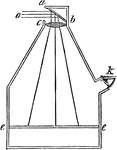
Camera Obscura
"Camera obscura strictly signifies a darkened chamber, because the room must be darkened, in order to…
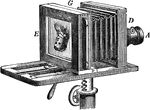
Bellows Camera
"The photographer's camera corresponds to the camera-obscura. A darkened box, adjustable in length,…
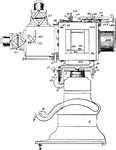
Photographic Camera
Equipment for taking photographs (usually consisting of a lightproof box with a lens at one end and…

Collapsible Magic Lantern
This collapsible magic lantern is an early form of a slide projector, also known as the ancestor of…

Optical Lantern
"The optical lantern is an instrument for projecting on a screen magnified images of transparent photographs,…

Magic Lantern
"Let a candle c, be placed on the inside of a box or tube, so that its light may pass through the plano-convex…

Stand for Supporting Cameras
A stand is a standing support or foundation which in this case is strictly to hold a camera in place.

Stereoscope
An optical instrument for giving to pictures the appearance of solid forms, as seen in nature.
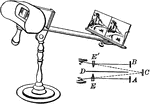
Stereoscope
"The stereoscope is an instrument for illustrating the phenomena of binocular vision, and for producing…

Vignetting Camera Attachment
Although vignetting is normally unintended and undesired, it is sometimes purposely introduced for creative…
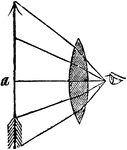
Visual Angle
"Suppose the object a, appears to the naked eye of the length repreesnted in the drawing. Now, as the…

Woman Standing Behind Camera
An illustration of a woman in a long dress and hat standing behind a camera.

